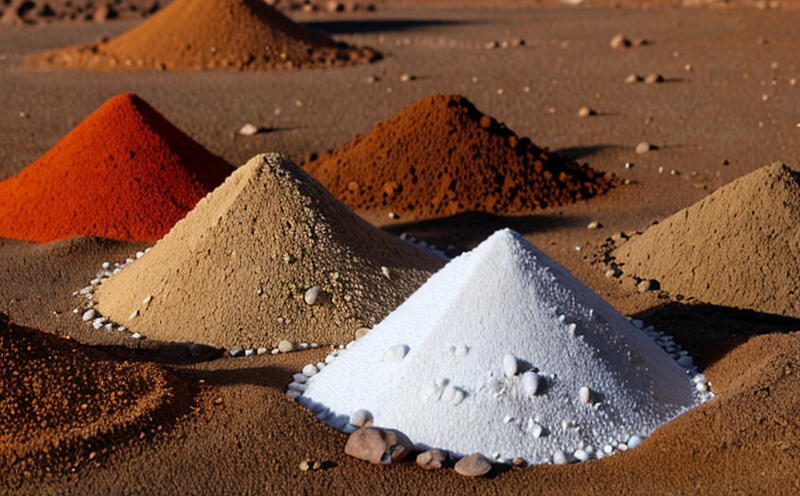ISO 23157 Chemical Analysis of Graphite Testing
The ISO 23157 standard provides a robust framework for the chemical analysis of graphite, particularly focusing on its trace element content and structural properties. This service is crucial in ensuring that materials meet stringent quality standards, especially for applications requiring high purity or specific elemental compositions.
Graphite's unique structure makes it essential in various sectors including mining, automotive, electronics, and aerospace industries due to its excellent electrical conductivity, thermal stability, and mechanical strength. The ISO 23157 test ensures that the graphite being used meets these critical requirements by quantifying impurities such as iron, silicon, aluminum, calcium, magnesium, sodium, potassium, titanium, vanadium, chromium, manganese, nickel, copper, tin, lead, zinc, strontium, barium, rubidium, cesium, bromine, and fluorine.
Our testing process begins with the careful selection of samples from various mining sites. These samples are then prepared according to ISO 23157 guidelines to ensure accurate results. The chemical analysis is conducted using state-of-the-art instrumentation such as inductively coupled plasma-optical emission spectrometry (ICP-OES) and X-ray fluorescence (XRF). These methods provide precise and reliable data on the elemental composition of the graphite samples.
The results generated from this testing are invaluable for quality managers, compliance officers, R&D engineers, and procurement teams. They help in validating the raw materials' purity, ensuring that they meet the stringent requirements set by industry standards such as ISO 23157. This information is critical for product development and reliability assurance.
The precision of these tests allows companies to differentiate their products based on purity levels, which can be a significant selling point in competitive markets. Moreover, compliance with international standards like ISO 23157 enhances the reputation of mining operations within the global market, ensuring that they meet regulatory requirements and industry best practices.
Applied Standards
| Standard Code | Description |
|---|---|
| ISO 23157:2018 | Chemical analysis of graphite by inductively coupled plasma-optical emission spectrometry (ICP-OES) and X-ray fluorescence (XRF) |
The ISO 23157 standard specifies the procedures for determining trace element content in graphite through ICP-OES and XRF methods. This ensures that all testing conducted meets international best practices, providing consistent and reliable results.
Benefits
- Achieves compliance with ISO 23157 standards for chemical analysis of graphite.
- Promotes product quality by ensuring high purity levels in graphite products.
- Supports regulatory and industry best practice adherence, enhancing reputation within the global market.
- Facilitates differentiation of products based on purity, which can be a significant competitive advantage.
Eurolab Advantages
At Eurolab, our expertise in ISO 23157 chemical analysis ensures that every test we conduct is precise and reliable. Our team of experienced chemists and technicians uses the latest technology to provide accurate results. We have a proven track record of delivering consistent outcomes that meet or exceed international standards.
Our facilities are equipped with advanced analytical instruments, ensuring that we can handle even the most challenging samples with ease. With our extensive experience in mining testing, we understand the specific requirements of your industry and tailor our services to meet them effectively. Whether you need one-off tests or ongoing analysis, Eurolab is here to support your quality assurance needs.





